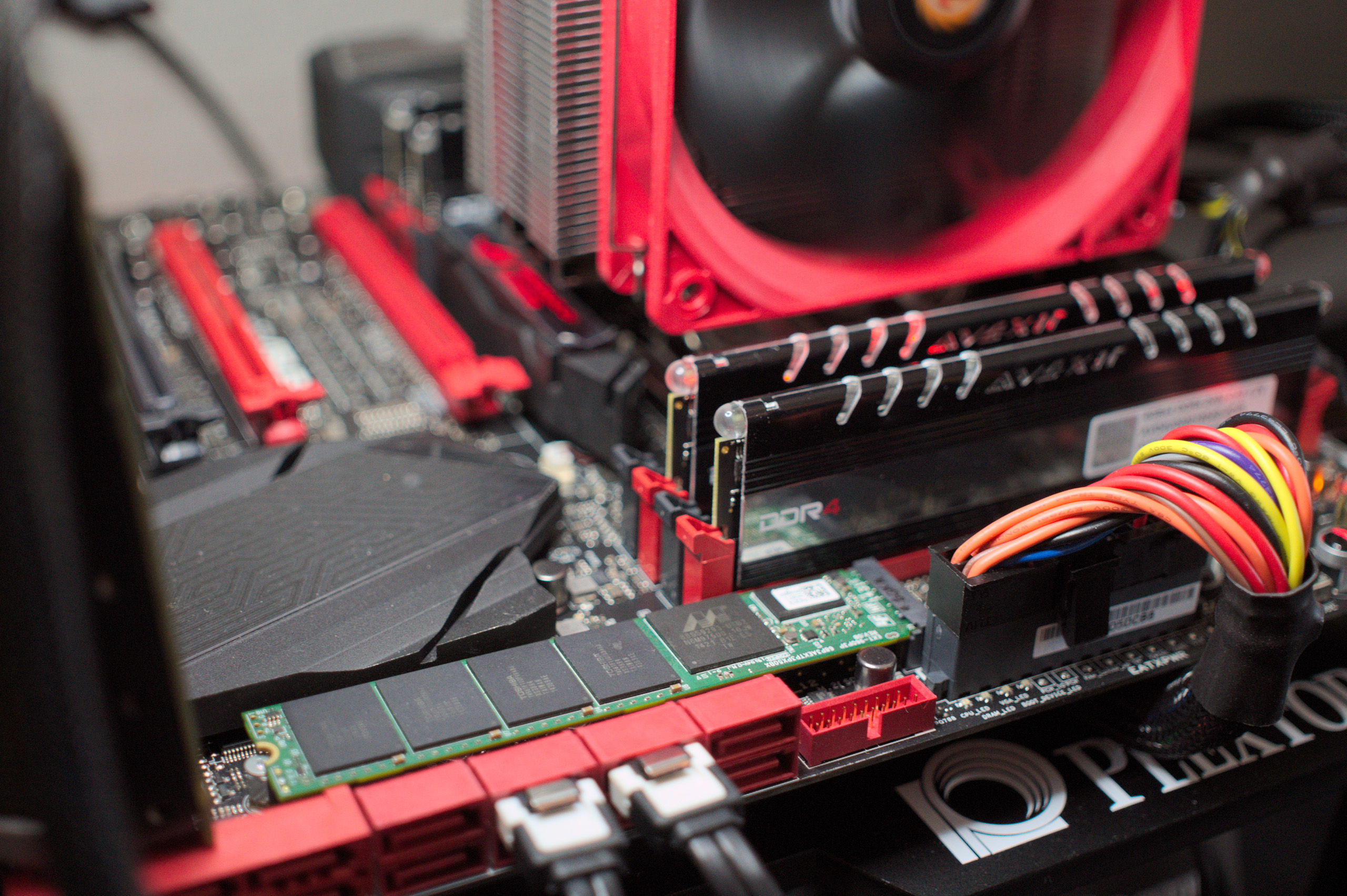Plextor's new M7e PCIe M.2 SSD hits 1400 MB/s reads at CES

It’s been a great CES for solid state drives. 2.5-inch SATA SSDs are butting up against the speed limitations of SATA 3, making the market incredibly competitive. Every company launching new drives knows they have to keep prices down. More exciting are the PCIe SSDs on their way this year. I saw two PCIe SSDs at Plextor’s CES suite that I’m already thinking about incorporating into future system builds. One, the M6e Black, is a revamp of an already fast PCIe SSD Plextor released in 2014. But the other, the M7e, is a PCIe x4 model coming later this year. By using twice the PCIe lanes, the M7e is going to push read/write speeds up around the 1400 megabyte per second mark.
Plextor released the M6e PCIe SSD in mid-2014. The SSD draws on two PCIe lanes, though it’s essentially just an M.2 SSD on a PCIe board. I ended up removing it from the board and installing it in the M.2 slot to run Windows on a Gigabyte X99 motherboard. It boots Windows 8.1 in under 10 seconds and maxes out read speeds around 770 MB/s.
The M6e Black is essentially the same SSD, with a couple minor changes. Plextor heard from some gamers that the plain jane green PCB was a bit ugly, so they gave the Black a slicker design. More importantly, they put a heatsink on it. In talking to Plextor, they said there isn’t much risk of a M.2 SSD overheating, but systems with big graphics cards and overclocked processors do naturally tend to run hotter, so the heatsink was worth adding to be safe.
The M6e Black also gets a bit of a firmware bump over last year’s version to support PlexTurbo 2.0, a piece of software similar to Samsung’s Rapid mode. PlexTurbo uses up to 4GB of system RAM as a cache to speed up R/W speeds. Like Samsung Rapid, it looks incredibly fast on synthetic benchmarks, but it’s not going to make your SSD magically, insanely fast in all use cases. I plan to test out PlexTurbo 2.0 with the M6e in the coming weeks to see if it noticeably improves daily PC use.
Unlike the M6e, the M7e I saw wasn't connected to a PCIe board; it was slotted into a motherboard's M.2 slot and transferring data via PCIe lanes. One tricky thing about M.2 is that some motherboards use SATA to handle data, rather than PCIe, which will bottleneck R/W speeds on a fast drive. But as M.2 becomes more popular, that issue is diminishing.
The M7e isn’t coming out until later this year, but the early version Plextor was showing off hit R/W speeds of 1411 and 1028 megabytes per second, respectively. That’s damn fast. There are already other PCIe SSDs out there that can hit those kinds of speeds, though the fastest use x8 PCIe lanes and cost around $2 per gigabyte. PCIe SSDs may start hitting affordable prices this year, and we’ll be keeping tabs on the M7e until it goes on sale.
The biggest gaming news, reviews and hardware deals
Keep up to date with the most important stories and the best deals, as picked by the PC Gamer team.

Wes has been covering games and hardware for more than 10 years, first at tech sites like The Wirecutter and Tested before joining the PC Gamer team in 2014. Wes plays a little bit of everything, but he'll always jump at the chance to cover emulation and Japanese games.
When he's not obsessively optimizing and re-optimizing a tangle of conveyor belts in Satisfactory (it's really becoming a problem), he's probably playing a 20-year-old Final Fantasy or some opaque ASCII roguelike. With a focus on writing and editing features, he seeks out personal stories and in-depth histories from the corners of PC gaming and its niche communities. 50% pizza by volume (deep dish, to be specific).

